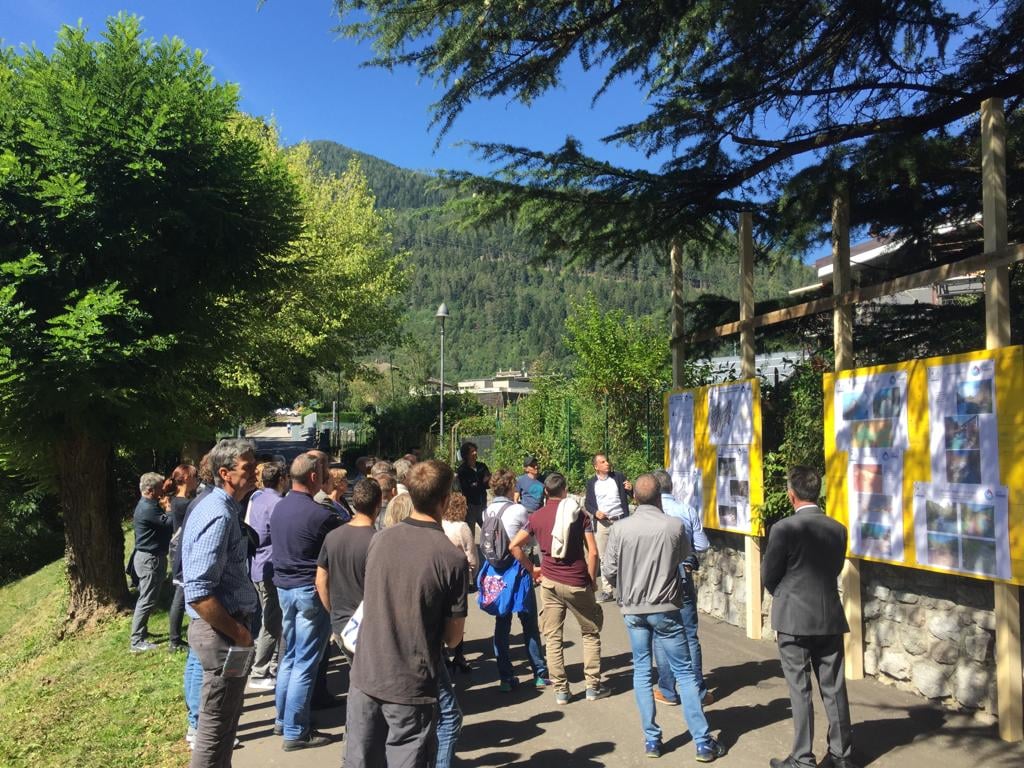Informing and training to help better communicate natural risks in the mountains
The Alps are very prone to flooding, a risk that is expected to increase with the impact of climate change. In Trentino, the LIFE FRANCA project has improved knowledge, communication, and anticipation of the flood risk by training all mountain stakeholders and improving the availability of information.
An increasing flood risk in the mountains
The Alps are particularly vulnerable to floods due to their topography and atmospheric conditions that can cause large and sudden flooding events. This is particularly the case in the Trento Province, where floods are not uncommon. The last significant event occurred in the summer of 2022, when around 100 mm of rain fell in one hour in some areas, causing flash floods and mudslides.
Floods threaten local communities in many valleys and cause significant environmental and economic damage. Unfortunately, these events are expected to increase in the coming decades as a result of climate change, which is leading to very rapid warming of the Alps, rapid melting of glaciers and more frequent heavy rainfall.
Although the Trento Province already has many flood prevention infrastructures in place, there is little public awareness of the risk and how to deal with it.
500 people trained to better communicate flood risk
To address this risk, the LIFE FRANCA project promotes a culture of environmental risk prevention in the Alps in order to improve the safety of the region and the population.
Three experimental study areas have been identified in the Province of Trento due to their high risk of flooding, despite the numerous mitigation infrastructures already in place. Two are in urban areas – the city of Trento and the Adige River, and the town of Borgo Valsugana and the Brenta River – and one is in a rural area, the Rendena Valley and the Sarca Basin.
Within these areas, the project worked with both the general public and with stakeholders involved in flood risk management or communication. Educational activities were organised for the local population to raise awareness of the flood risk in the region, in the form of workshops, Science Café events or interventions in schools. In addition, more than 500 professionals, such as administrators and journalists, were trained to improve their skills in communicating regional risks to the general public and local populations.
Another important part of the project was to improve the collection, analysis and structuring of data on flood risk in Trentino. Scenarios were also identified to assess the impact of potential flood events on the population and on some activities, such as tourism or agriculture. The data and scenarios have been used to communicate with the public and the stakeholders involved.

An online portal to centralise information
The project has also launched a new online portal on flood risk in the Trentino Province. The tool offers both information and training material on flood risk, legal and administrative content, an overview of the different regional actors involved in the region, maps of flood risk areas and real-time information to better communicate with the public. It also provides detailed real-time weather information and allows anyone to report unusual hydric phenomena observed in the region.
The portal is updated by the Mountain Basin Service of the Autonomous Province of Trento. This ensures that the tool is not only kept up to date by the authorities responsible for natural disaster management, but also remains useful after the project has ended.